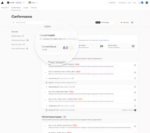
The team at Vercel, the platform for frontend developers, today introduced Next.js 13 in order to provide developers with heightened levels of flexibility and customization without the restrictions of technical limits.
With this, users gain access to a redesigned approach to website layouts, data-fetching, and server-rendering. According to Vercel, Next.js 13 works to ship less JavaScript while also making ambitious updates possible and simplified.
This release also provides developers with a component toolkit that is intended to address common artifacts of the web such as images, font, scripts, and social cards.
This toolkit includes a new <image> component to optimize images on-demand for better performance as well as a new <font> module to optimize fonts and remove external network requests by doing away with connection setup times to third-party hosts.
Next.js 13 also includes Turbopack, the successor to Webpack. Turbopack is a Rust-based incremental bundler that draws on the lessons of build systems like Turborepo.
The goal of this is to enable enterprise businesses and developers to operate their sites more efficiently.
In addition, the team at Vercel announced that it has acquired the analytics platform, Splitbee. With this, data is collected by the user’s own website rather than being collected by Google Analytics or another provider.
This acquisition is aimed at broadening developer analytics by allowing businesses to focus on traffic analysis and A/B testing.
Lastly, the acquisition of Splitbee allows developers to leverage actual visitor data. According to Vercel, this provides users with a Real Experience Score and actionable insights in order to help upgrade post-launch workflow, and iterate until the desired performance is reached.






